Brian Clegg's Blog, page 69
July 6, 2015
How to enjoy Sens8
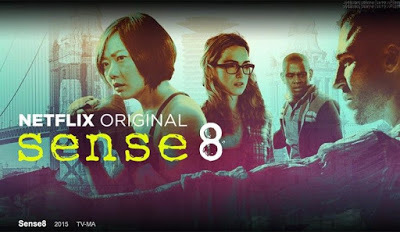 A number of my friends have struggled with the new Netflix series Sens8, from the Wachowskis. I have to confess the original Matrix movie was one of my ten best ever, but I was a bit worried that the siblings were one hit wonders (think M Night Shyamalan). But despite some problems with their first TV series, they have achieved something interesting with Sens8.
A number of my friends have struggled with the new Netflix series Sens8, from the Wachowskis. I have to confess the original Matrix movie was one of my ten best ever, but I was a bit worried that the siblings were one hit wonders (think M Night Shyamalan). But despite some problems with their first TV series, they have achieved something interesting with Sens8.So here we go.Lie back and go with the flow. It will take some time. Not much happens in the first two episodes, but it does slowly build after that. Just let it wash over you. It's about the experience, man.Accept the fact that about 90% of the script is essentially an extended therapy session for the main characters. They won't necessarily end up happier, but they will be more self aware. Be happy for them.You are going to find flipping between eight main characters' storylines irritating, particularly when there is action in one of the locations and it gets engrossing. But over the season all the characters become genuinely interesting. Don't expect deep philosophy from science fiction. Essentially the argument seems to be that our heroes a) Feel things far more than ordinary humans and b) Believe that the solution to almost all problems is hitting people. This doesn't feel entirely logically, but remember the philosophy of the Matrix and all will become familiar.Unlike a lot of US series writers, the Ws know the importance of ending on a positive note, even though there's clearly a lot more strife to come. So thankfully there isn't one of those really irritating season end cliffhangers, which I truly hate. (Especially when the series gets cancelled, so the cliffhanger is never resolved.)There are a surprising number of good bits. Anything worthwhile is worth working for. Consider the rest of it the necessary work. You can always speed through the gratuitous sex scenes.
Published on July 06, 2015 01:12
July 1, 2015
Summertime blues
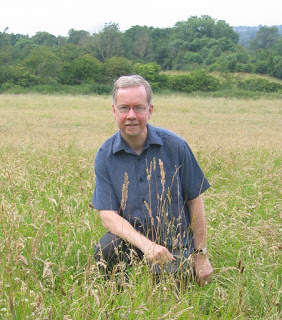 A field. A few years ago.It's that time of year when a young person's fancy turns to wafting through fields of corn, wheat and other arable crops in slow motion, and the rest of us slow down a bit.
A field. A few years ago.It's that time of year when a young person's fancy turns to wafting through fields of corn, wheat and other arable crops in slow motion, and the rest of us slow down a bit.As a result I will only be blogging intermittently for the next few weeks - but I'll be back to full force in September.
Here we go. Fire up the Vangelis...
Published on July 01, 2015 23:59
When precision become pedantry
 But it's a TV programme! It's not made from grapes.Being a science writer puts you at the intersection of two very different disciplines. Scientists know too well the importance of precision, but writers have to be aware of the nature of language - how it changes and evolves - and to be aware that following 'the rules' can be the enemy of good communication.
But it's a TV programme! It's not made from grapes.Being a science writer puts you at the intersection of two very different disciplines. Scientists know too well the importance of precision, but writers have to be aware of the nature of language - how it changes and evolves - and to be aware that following 'the rules' can be the enemy of good communication. One thing scientists sometimes struggle with is that 'the rules' in English aren't some universally agreed set of standards but rather an untidy mix of what has been used for a while and what's coming into use. There is no body setting the official version, though personally I do tend to consider the OED (Oxford English Dictionary) to be pretty much the definitive arbiter on words. It doesn't help, though, with grammar. And so, for instance, some continue to insist that we shouldn't split infinitives, even though people have found it acceptable to boldly split the 'to' and the 'verb' where it works well for decades. Even the fusty old Fowler guide, which must be about 90 years old, says it's ridiculous to apply a concept from Latin (where you can't split the infinitive because there is no 'to') to English.
I recently came across this kind of thing on Facebook, where someone was blaming supermarkets for using the term 'elderflower wine'. I couldn't see anything wrong with this, but I was told you can't have elderflower wine because wine, by definition is made from grapes. To me this is out and out pedantry of the 'can't split infinitives' type. But let's be fair and examine the arguments. (I ought to say I'm playing devil's advocate here, because the person complaining couldn't come up with an actual reason not to do this other than 'only applies to grapes.') So here we go:
The term 'wine' only applies to the fermented alcoholic drink made from grapes. I checked the OED and although it obviously does say that wine is a fermented alcoholic drink made from grapes, it also says that the term (usually with a qualifier, like 'elderflower' in this case) applies to all sorts of fruit, flowers etc. etc.It's an irritating trendy new usage. The OED lets too much through - they've even included twerking. Well, it's true they have included twerking, but why shouldn't they? As mentioned above, a language is not set in aspic. It changes year by year. Anyway, in the case of using 'wine' to refer to fermented alcoholic drinks made from something other than grapes, the first example in the OED dates back to the fourteenth century. It's not exactly a trendy new usage. This use of the word 'wine' is solidly established and has been for centuries.But the word 'wine' comes from the same root as 'vine' and 'viniculture'. It specifically refers to grapes. So what? A vast number of words no longer refer to their original root meaning. This is not an argument.It will confuse people. How? If there's no qualifier, it's made from grapes. If there is a qualifier, it's made from that source. Are you honestly saying that someone will hear 'elderflower wine' and think 'Hmm, because it's called wine it is clearly made from grapes'?They should use a more appropriate term. Like what? Short of using a EU style 'non-grape elderflower fermented wine-style beverage' there isn't a more appropriate term. That's because it has been called elderflower wine for centuries. But even if there were an existing term, again this is trying to apply rules that don't reflect the way that English works. We don't say 'it's confusing to use the word "sofa" because we already have the word "couch" to use.' There can be more than one word to describe the same thing. All in all, this is probably a storm in an elderflower wine glass. (Hang on, am I allowed to call it a glass? Someone might confuse it with a window, or the plural with spectacles.) But elderflower wine is what we call it in English, and it's not going to go away.
Published on July 01, 2015 01:44
June 30, 2015
A calendar education
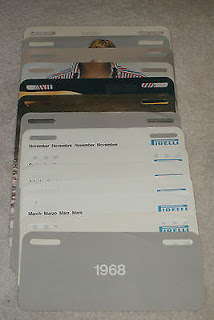 When there's an outburst of indignation about a stupid remark made by an elderly person, such as the furore over Tim Hunt's comments on women in the laboratory, it's easy to forget how much we have moved on in the last 40 or 50 years. We are yet to achieve proper equality for women, but it's easy to forget just how strikingly different things were just a few decades ago. Take, for instance, the issue of calendars.
When there's an outburst of indignation about a stupid remark made by an elderly person, such as the furore over Tim Hunt's comments on women in the laboratory, it's easy to forget how much we have moved on in the last 40 or 50 years. We are yet to achieve proper equality for women, but it's easy to forget just how strikingly different things were just a few decades ago. Take, for instance, the issue of calendars.When I was young, every car part manufacturer and plumber's supplier produced an annual calendar with pictures of women in relatively few, if any clothes. Most of these were pretty horrendous productions, though some had pretensions of artiness, and none more so than the calendar produced by the tyre company Pirelli. These weren't the kind of thing that were plastered on the wall of garage workshops, but sought after collectors' items. But still, in the end, arguably objectification. (I admit the line between such things and art is fuzzy. It would be censorship indeed if art were not allowed to portray the human body.)
When I wrote the first draft of this post, my next line about the Pirelli calendars was 'Still, in the end, unacceptable to modern eyes, but very different beasts from the common girlie calendar.' I then took a look online and discovered that they still make the Pirelli calendar in this form. So we've a way to go yet.
Back on topic, I do have to give an accolade to one attempt at being arty on the part of a calendar maker, though. It made me realise that there is a point to poetry - or at least some poetry.
My dad's best friend, Jesse, worked for the chemical giant Ciba Geigy, and somewhere around 1970, he gave me one of their calendars. They had produced their equivalent of the Pirelli output with relatively subtle and arty shots of women, but each was captioned with a couplet from a poem. And some of those lines really got to me.
I can't remember many of them now, but two spring to mind:
All that's best of dark and bright
meets in her beauty and her eyes.
from Byron's She Walks in Beauty and
Annihilating all that's made
to a green thought in a green shade.
from The Garden by Andrew Marvell. Several were from the seventeenth century like the latter, and led me to a fondness for the likes of Marvell and Donne. As I've previously remarked, I don't have a lot of time for poetry, because I'm not the poetry equivalent of a railway enthusiast. Most of the time I don't get it. Possibly because it's much harder to write a half-decent poem than a half-decent novel, so most output is rubbish. But thanks to a calendar of my youth, there a few cases where I do.
Published on June 30, 2015 00:41
June 29, 2015
Jonathan Strange and Mr Norrell review
 So Jonathan Strange and Mr Norrell is finished and it's hard not to add 'thank goodness'. It was never bad enough not to stick with it, but it came close.
So Jonathan Strange and Mr Norrell is finished and it's hard not to add 'thank goodness'. It was never bad enough not to stick with it, but it came close.The trouble with adapting an over-long book that is intriguing and irritating in equal measures is that unless you take liberties with the script you end up with exactly the same kind of TV show. And they did. The series could have been condensed from 7 hours to 3 without significant loss.
The good news for those of us who hung on to the end was that the last episode was by far the best - far more engaging than some of its predecessors.
In fact, there was a lot in principle to like about the show. The CGI was surprisingly good, and the actors universally did an excellent job. There were striking set pieces throughout - it's just that for a lot of the episodes there was far more exposition and repetition than there was any real progression to the plot.
The other big problem was that the two most interesting characters - Mrs Strange and Childermass - both seemed underused. I don't know how much this is down to the book - I read it when it first came out and can't remember much about it - and how much it's the adaptation. Many of the other characters, though well acted, were a touch two dimensional.
Another moan is that because, after a very leisurely first six episodes, there was so much crammed into the final one, it wasn't really clear why Strange and Norrell disappeared at the end. The explanation was very short, and muffled to boot.
So, without doubt a brave attempt at a difficult novel to bring to the screen. But could have been better.
Published on June 29, 2015 03:10
June 25, 2015
Names and associations
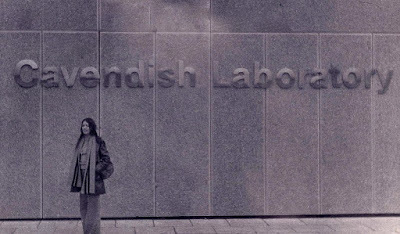 Valerie at a serious location, back in the black and white daysAs I was sitting on the bus heading for the station the other day, I contemplated the way that associations can completely change how we view a particular name.
Valerie at a serious location, back in the black and white daysAs I was sitting on the bus heading for the station the other day, I contemplated the way that associations can completely change how we view a particular name.This came to mind as the bus headed past Cheney Manor. Given that name alone, my suspicion is that a rather splendid Tudor mansion would come to mind, either in beautifully laid out formal gardens, or possibly going a bit to seed as the owners couldn't keep it up. Definitely a des. res.
But if you know Swindon, you will probably be aware that Cheney Manor is not a distinguished old house, but an area of the town that has seen better days and whose most notable occupant is a small trading estate. The only obvious 'Manor' is one of those not entirely welcoming looking modern pubs. All-in-all, it's not exactly a National Trust tourist destination. (Sorry to any Cheney Manor residents - I'm sure it's a lovely place to live.) Suddenly, given the context, the name feels very different.
I experienced something similar as a student, but with a person's name. From my youth, I had very negative associations with the name 'Valerie'. This may have been because we had someone in our junior school class called Valerie who had an unfortunate bladder condition. Or just because it's one of those names. Either way, it felt like a name to avoid.
Then I met Valerie, who sang in the same choir. Like half of my college (or so it seemed) I fell head over heels for Valerie. And suddenly I couldn't understand my previous attitude to the name. It was a lovely name. Possibly one of the nicest girls' names ever.
Sadly for me and that half of the college, Valerie married a musician from another college, who (it was generally considered in our college) was unworthy. Strangely, soon after, the name was once more one that I really didn't like too much.
As it happens, I now know a couple of exceedingly nice Vals, and that seems a fine name to me. But I'd be grateful if they didn't tell me that it was short for Valerie.
Published on June 25, 2015 02:44
June 24, 2015
Attend a virtual lasers and accelerators symposium
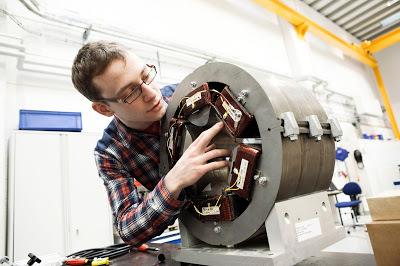 LA3NET Fellow (see below for silly acronym) Jakob Cramer checking
LA3NET Fellow (see below for silly acronym) Jakob Cramer checkinga magnetic lens for particle beamsAccelerators like the Diamond Light Source and high power laser facilities are at the glamorous end of physics, so what better way to get a taster for some of the amazing career opportunities for scientists and engineers than a symposium for sixth formers exploring this remarkable world?
Unfortunately the symposium at the Liverpool Convention Centre this Friday is sold out, but the good news is that you (or students you teach) can still 'attend' in a virtual way via webcast. That will be available here, and they've even got Brian Cox, so who could resist?
If you'd like some more details, here is the inevitable press release:
FROM PIECING THE COSMIC JIGSAW TO IMAGING PROTEINS Lasers and Accelerators symposium set to inspire next generation of accelerator scientists and engineers says Cockcroft Director
“You could be working at the forefront of human knowledge in a science that is unlocking the mysteries of the Universe and that has applications in healthcare, materials, and drug development among others;” that is the message from the Cockcroft Institute to sixth formers attending the ‘Lasers and Accelerators for Science and Society’ symposium, 26th June 2015.
There is a shortage of engineers and scientists with skills in this exciting area, and industry is keen that young people consider it as a career.
Professor Carsten Welsch, Associate Director of the Cockcroft Institute in Daresbury, an internationally renowned centre for accelerator science and technology, says that the symposium aims to inspire people with the possibilities of this rapidly evolving science.
He says: “Accelerator science is a young discipline and the people pushing back the frontiers of knowledge are also often only in their twenties. There are real opportunities not only to discover something new but also to see its application in healthcare or industry within a relatively short time-frame.”
With the popular appeal of recent films such as “The Imitation Game” and “The Theory of Everything” generating interest in scientists and their work, Prof Welsch is hoping that meeting real scientists involved in blue-sky and applied research will lift the ambitions of students.
“We have chosen speakers such as Professor Brian Cox who are good at making science accessible and that are at the forefront of their fields. They also include Professor Katia Parodi who has pioneered image-guided radiotherapy for targeting cancer tumours and Dr Ralph Aßmann who is working on a new generation of compact particle accelerators that will be economically viable in new markets.”
Prof Welsch has been leading three pan-European programmes, which are creating fellows with vital skills in particle acceleration, beam technologies and laser science. Along with their research, the fellows have also enjoyed training in project management, networking and presenting to ensure they are highly employable.
The fellows have each been set challenges by project partners – drawn from industry and research – and the symposium marks the completion of these endeavours.
Fellows from two of the programmes – oPAC (optimization of particle accelerators), and LA3NET (lasers for applications at accelerator facilities) – will get an opportunity to present their results in a poster session.
oPAC fellow Manuel Cargnelutti, graduated in 2012 and has a masters in Electrical Engineering. He was initially considering software programming when he saw details of the scheme; “The field of particle accelerators was totally new for me, and the final application is fascinating,” he says.
“The oPAC programme offers a very unique combination of the industry and science worlds, aiming to improve both technical and secondary skills. This was just what I wanted.”
Posters will include work from the following projects:
Femtosecond x-ray imaging – x-ray crystallography has been widely used to improve our knowledge of the structure and function of many biological molecules including vitamins, proteins and DNA itself, but the technique is limited to materials that can create a crystalline form. Also the samples are static, so it cannot be used to understand the motion of proteins.
These problems can be overcome using ‘free-electron lasers’ but these are very large, sophisticated facilities, of which there are only a few in the world.
LA3NET fellow Andreas Dopp is developing a system that generates intense pulses of x-rays that last only a few femtoseconds (10-15 or one millionth of a billionth, of a second) and would be capable of imaging a protein unfolding in real time which would advance our knowledge of diseases such as Alzheimer’s and cancer.
In future this work will help to produce an alternative source of x-rays, with similar properties to those from free-electron lasers, but potentially smaller and cheaper.
A magnetic lens that focuses high-energy particle beams - a particle beam needs to be sharp in order to be effective. LA3NET fellow Jakob Kramer is designing, building and testing a magnetic lens that works with a new type of accelerator, which uses high-power lasers to accelerate a particle beam. This magnetic lens would increase the precision and power of the beam within a more compact accelerator.
Unravelling secrets of the cosmic jigsaw – we still do not know what 85% of the matter in the universe consists of. To try and understand this cosmic jigsaw scientists have been working on a ‘standard model of particle physics’ which describes all the fundamental particles we know and their interactions.
The gigantic Large Hadron Collider was built in order to do experiments that tested the model but now a more advanced accelerator is required to go even further and two oPAC fellows Emilia Cruz Alaniz and Alessandra Valloni are working on this; the design of a new electron-proton collider.
For those not able to attend the symposium there will be an opportunity to follow the talks via webcast: www.cockcroft.ac.uk/symposium-on-lasers-accelerators-for-science-and-society
Published on June 24, 2015 00:45
June 23, 2015
Do writers dream of electric souls?
 Having just watched the sometimes excellent movie Ex Machina, I am tempted to wonder if a lot of writers who use artificial intelligence (AI) themes are unconsciously playing out Descartian duality, assuming that we have souls and that, lacking a soul, an AI would act purely selfishly.
Having just watched the sometimes excellent movie Ex Machina, I am tempted to wonder if a lot of writers who use artificial intelligence (AI) themes are unconsciously playing out Descartian duality, assuming that we have souls and that, lacking a soul, an AI would act purely selfishly.Of course, this assumption is not true of all such fiction. In the curious Kubrick/Spielberg handover film AI, the Pinocchio-like AI's search for the chance to be a real boy has as much soul as it does schmaltz. But in Ex Machina, the Ava character (I'll try to avoid too many spoilers) demonstrates an 'inhuman' lack of concern when there was an opportunity to save someone who had cared for and helped her, at no cost to herself.
Would a true AI with human-like intelligence really do this? There are good evolutionary reasons for the existence of altruism and mutualism, and to totally ignore them would not really be logical. Of course it could be that Ava was not an AI at all - one of the big themes of the movie - but merely a machine that was very good at simulating being conscious, in which case such an outcome was perhaps more likely.
I'm certainly not knocking the film (though the ending seemed to forget the tiny problem of the need for power sources). It was great at portraying the kind of culture that pervades organizations like Google, Microsoft and Apple - including the degree to which a search engine company particularly can abuse its position - and there was some genuinely thoughtful conversation about the nature of artificial intelligence, plus good playing by all the leads. But my suspicion is that Ava was intended to be a genuine AI, which despite all the superb CGI, the writer still saw as a tin woman without a soul.
Published on June 23, 2015 01:19
June 22, 2015
The Time Torch - review
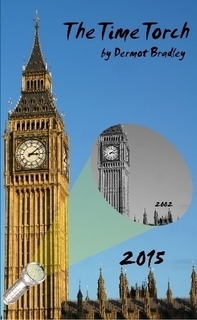 This is a curious but likeable little book. That 'little' is not a condescending remark. The book is physically small - about two thirds of the width of a normal paperback - with large print that means it's almost like reading on a Kindle rather than a normal printed copy.
This is a curious but likeable little book. That 'little' is not a condescending remark. The book is physically small - about two thirds of the width of a normal paperback - with large print that means it's almost like reading on a Kindle rather than a normal printed copy.I am always a little wary about self-published titles, which this is, but it has been well proof read, with no more typos than I see in books from mainstream publishers. What particularly attracted me to it is that it's a story involving a time machine - I love time machines - and the blurb said that it made an attempt to make the science as close to realistic as possible, which got my science writer antennae twitching... and it turns out that this is a reasonable claim.
So we've some interesting science and a satisfying if fairly simplistic plot. The Time Torch was a short enough read to get through all of it on a train journey (it verges on being a novella), and it was entertaining enough in the storyline and intriguing enough in that science content to mean that I genuinely enjoyed the experience.
I have to admit, though, that the book isn't without faults. The main characters aren't particularly likeable. Even though a major plot point is reminiscent of the backstory of Batman, the characters don't reflect the superhero ethics shown in the Spider Man's reflection that 'with great power comes great responsibility.' And the writing style is idiosyncratic to say the least. The author likes to be very specific about some things and lacks sophistication in his writing. To get a feel, here's the opening of the third chapter, where we are introduced to the girlfriend of main character Ben:
Ben rang his girlfriend, Melissa Harper. Melissa was a tall elegant woman with an athletic frame. She was in a smart business suit seated at a table with five other people. She felt her phone vibrate on the table. She had a quick look at the screen and saw it was Ben.I'm not going to pick out detail, but it's not the most elegant writing and time and time again through the book the essential fiction editor's plea 'Show, don't tell,' is roundly ignored.
As for the science, like any science fiction the plot has to come first, so the physics isn't 100% accurate, but it was a noble attempt and very clever concept. The author starts by telling us that for matter to travel through time is impossible - which is simply wrong, but that's not too much of an issue. Instead, though, our hero sends photons into the past. He uses a general relativity approach (the only potential way we know to get something into the past, so that's good) to get his photons back in time. But the clever bit is that they are in a state of quantum entanglement with photons that remain in the present. When the spray of photons (his 'time torch') hits an item in the past, it shows up in the twinned photons that remain in the present.
This nicely reflects the real experiment in which a picture of a cat was generated using photons that never encountered a cat-shaped slot thanks to entanglement. In practice there are a number of reasons why the approach wouldn't work. Entangled photons lose their entanglement when they interact with atoms. So though it was possible to produce an image of a slot, where the entangled photons didn't hit anything, it's not possible for an entangled photon to hit, say, a person and reflect off her to produce an image from its entangled partner - both because the entanglement is lost and the 'reflected' photon isn't the same one that was emitted by the 'torch'. If such imaging were possible, you could use entanglement to send messages faster than light, which has all sorts of interesting implications and doesn't happen. The other big snag is that general relativity techniques can only send things back as far as the point in time that the device was first switched on, making it impossible to work in the way that was required for the story.
These science notes are minor niggles, though, which are absolutely fine to make the plot work. It doesn't stop the idea of the 'time torch' being very clever, along with the interesting details that you could see into the past, but only in black and white and without sound, giving the fictional inventor some worthwhile challenges.
So what we have here is a really interesting science fiction concept and a reasonable plot, but an undeveloped style. If you can set the unpolished writing aside, it's well worth a go.
You can find The Time Torch at Amazon.co.uk and Amazon.com on Kindle or at Lulu as a paperback.
Published on June 22, 2015 01:00
June 18, 2015
Stop blaming police and government
I am getting decidedly fed up of the reporting of the immensely sad case of the three women and nine children from Bradford who disappeared into Turkey, and probably Syria on their way back from a pilgrimage to Saudi Arabia. (I ought to emphasise that we should be doing all we can to get these children returned home.)
I keep seeing press and politicians saying ‘The police didn't do enough to prevent them,’ or ‘The government isn’t doing enough to prevent radicalisation.’ Last night on the news a reporter's main question to someone in Bradford was 'Are you angry with the police?' And a couple of days ago, Baroness Warsi was quoted as saying that the Government was failing to offer sufficient collaboration with Muslim communities in Britain to ensure it could combat the threat of radicalisation.
However, by the time the police need to act it’s too late - the mindset is in place. And should the government need to be thought police? Surely it’s time that a culture that makes a significant number of individuals think it’s okay to act this way undergoes major change? And that can’t come from the government, it has to come from within.
When I taught creativity in large companies, I would sometimes talk to the management and essentially say 'I can come and do the training if you like, but nothing will actually change unless the company culture changes - and that has to come from inside.' It's not enough to have tools and rules imposed from outside, you have to that cultural will to make something happen. And that can only happen if the people involved collectively commit to do so. It's exactly the same here.
We hear a lot, for instance, about the slick Internet videos of ISIS that convince people that places like Raqqa and Mosul are lovely peaceful cities where you can live a much better life than in the UK. Why would individuals believe iffy internet videos over the constant stream of horror images we see on the news, making it clear what IS has in store, particularly for women and children? Surely it can only be because, for whatever reason, these individuals have been brought up to consider anything framed as Islamic, however far it may be from the true religion, to have greater significance than information originating from civil society? That's not down to the police or the government.
There is a very clear lesson that time after time isn't being learned.
I keep seeing press and politicians saying ‘The police didn't do enough to prevent them,’ or ‘The government isn’t doing enough to prevent radicalisation.’ Last night on the news a reporter's main question to someone in Bradford was 'Are you angry with the police?' And a couple of days ago, Baroness Warsi was quoted as saying that the Government was failing to offer sufficient collaboration with Muslim communities in Britain to ensure it could combat the threat of radicalisation.
However, by the time the police need to act it’s too late - the mindset is in place. And should the government need to be thought police? Surely it’s time that a culture that makes a significant number of individuals think it’s okay to act this way undergoes major change? And that can’t come from the government, it has to come from within.
When I taught creativity in large companies, I would sometimes talk to the management and essentially say 'I can come and do the training if you like, but nothing will actually change unless the company culture changes - and that has to come from inside.' It's not enough to have tools and rules imposed from outside, you have to that cultural will to make something happen. And that can only happen if the people involved collectively commit to do so. It's exactly the same here.
We hear a lot, for instance, about the slick Internet videos of ISIS that convince people that places like Raqqa and Mosul are lovely peaceful cities where you can live a much better life than in the UK. Why would individuals believe iffy internet videos over the constant stream of horror images we see on the news, making it clear what IS has in store, particularly for women and children? Surely it can only be because, for whatever reason, these individuals have been brought up to consider anything framed as Islamic, however far it may be from the true religion, to have greater significance than information originating from civil society? That's not down to the police or the government.
There is a very clear lesson that time after time isn't being learned.
Published on June 18, 2015 00:38



